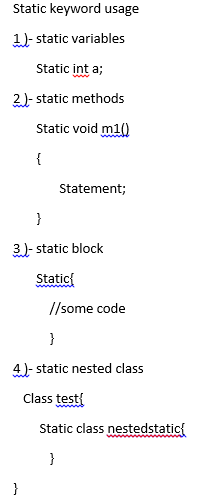Nested switch statement in JAVA
You can use switch as a part of statement sequence at an outer switch. This is called a nested switch. since a switch statement defines its own block, no conflict arise between the case constant in the inner switch and these in the outer switch.
Nested-Switch statements refers to Switch statements inside of another Switch Statements.
Syntax :-
switch (expression)
{
case constant expression:
{
switch(expression)
{
case constant expression:
{
statement;
break;
}
default :
{
statement;
}
}
default:
{
statement;
}
}
}
ex :-
class test
{
public static void main(String args[])
{
int i=0;
int j=1;
switch(i)
{
case 0:
{
switch(j)
{
case 0:
{
System.out.println("i is 0 & j is 1 ");
break;
}
case 1:
{
System.out.println("i is 0 & j is 1 ");
break;
}
default:
{
System.out.println("invalide nested default case ");
}
break;
}
case 1:
{
System.out.println("i is 1");
break;
}
default:
{
System.out.println("no matching form ");
}
}
}
}




0 Comments